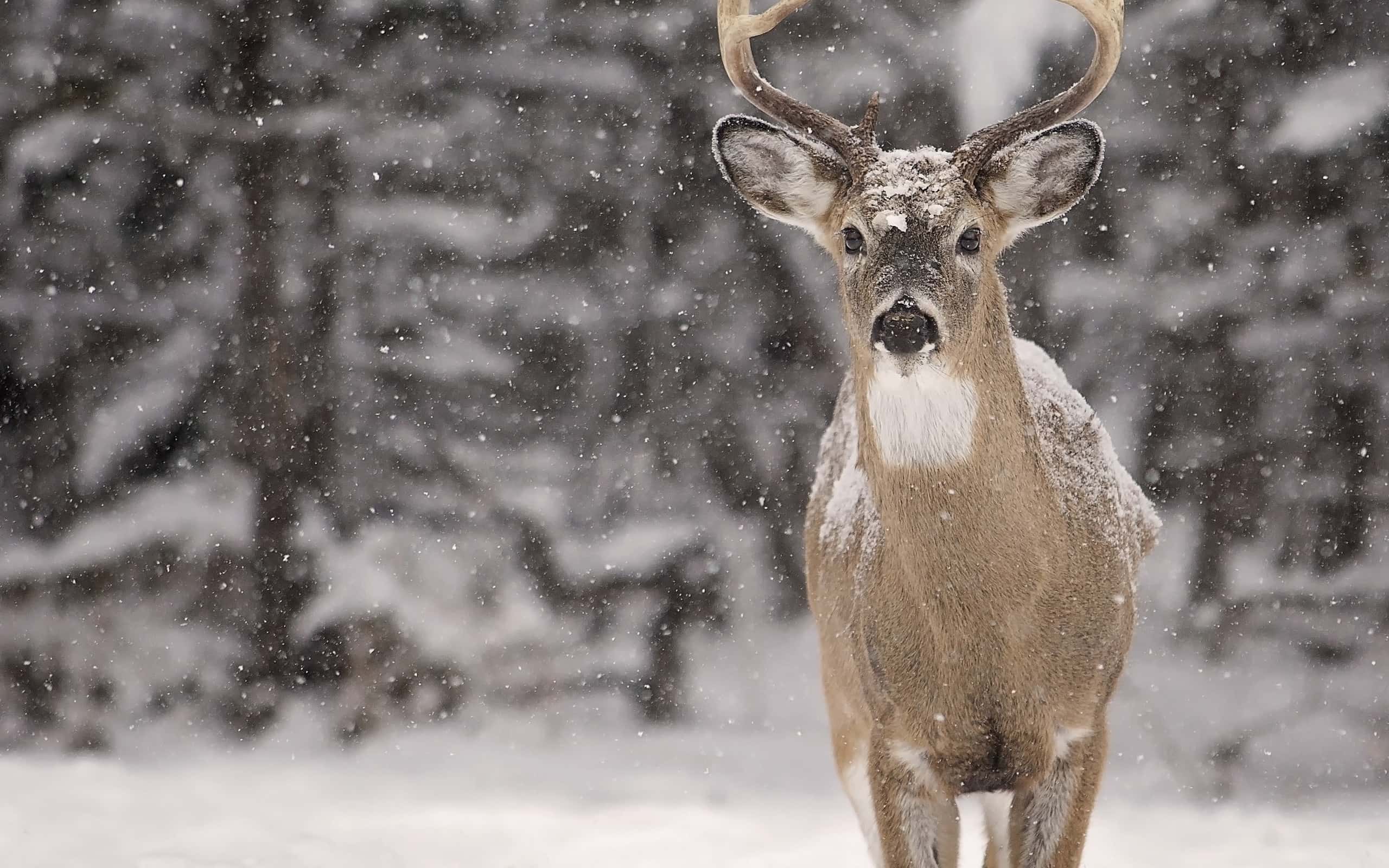Have you heard of zombie deer? Ohio is home to approximately 700,000-750,000 white-tail deer. While this number doesn’t even place Ohio in the top five states for the highest deer population, it is still considered one of the country’s best places for deer hunting. However, besides hunters and natural predators, there is now an illness threatening deer in Ohio. Sadly, chronic wasting disease (CWD), also known as zombie deer disease, has been found in Wyandot and Marion counties. What is CWD, and what does it mean for Ohio deer and hunters? Keep reading to learn more.
Ohio’s White-Tail Wonders
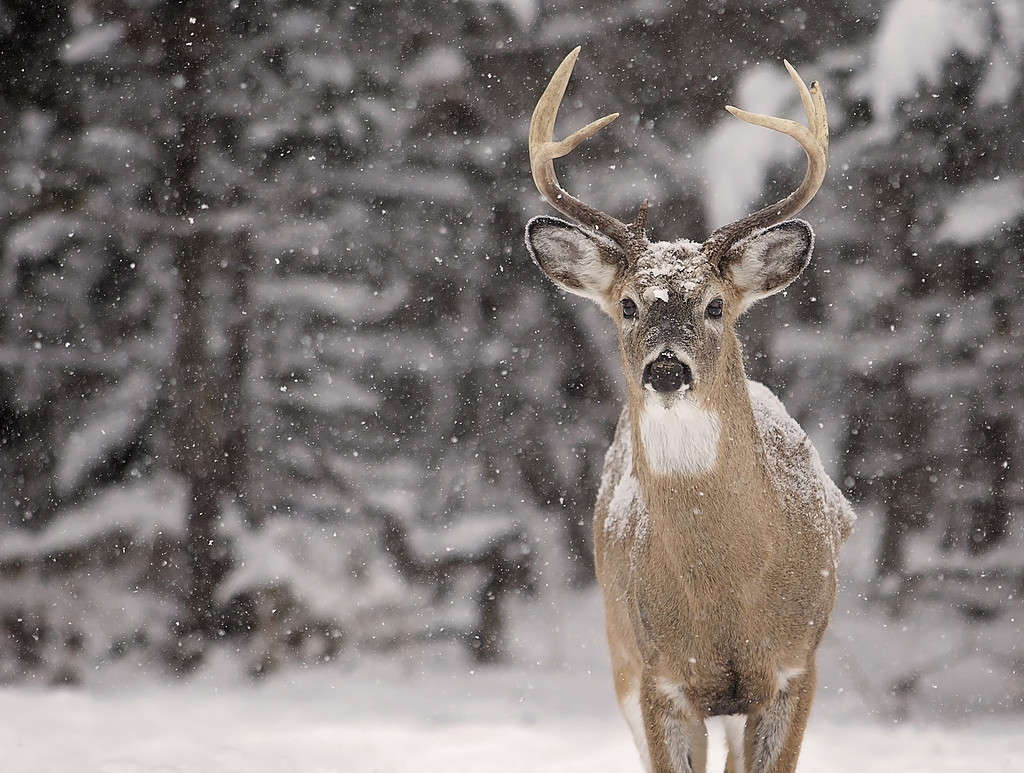
Ohio is a popular deer hunting state due to its management program.
©Lynn_Bystrom/iStock via Getty Images
While many animals are native to Ohio, the state has become a staple for deer hunters due to its deer management program. Shockingly, deer nearly disappeared from Ohio entirely in the early 1900s. According to the National Parks Service and Cuyahoga Valley National Park, efforts to reestablish the deer population began in the 1930s. By the 1960s, these measures resulted in deer overpopulation, which still plagues the state of Ohio to this day.
On average, white-tail deer typically survive 3-5 years in the wild and up to 20 years in captivity. These majestic woodland critters can range from 150 pounds to 611 pounds and live from a predominantly herbivore diet. While several predators, such as bobcats and coyotes, kill white-tail deer, hunters are their largest threat.
Fawn of the Dead: What Are Zombie Deer?
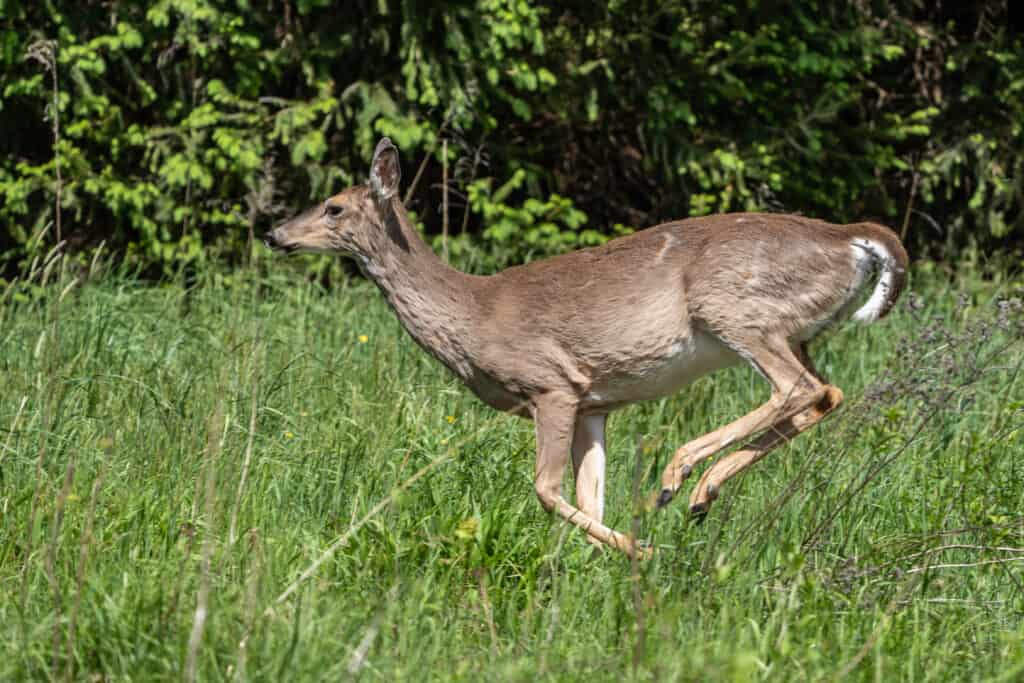
Deer may not show symptoms of CWD for years after the initial infection.
©Amy Lutz/Shutterstock.com
Zombie deer are the unfortunate victims of a common but fatal illness that plagues deer, known as chronic wasting disease. The Centers for Disease Control and Prevention (CDC) classifies CWD as a “fatal disease that affects the brain, spinal cord, and many other tissues of farmed and free-ranging deer, elk, and moose.” This deer-ranged disease is transmitted through contact with bodily fluids and environmental elements that have been contaminated, such as water or food. Unfortunately, CWD can take more than a year to incubate and multiple years to show symptoms after infection. The CDC considers the following symptoms to be possible signs of zombie deer:
- Lack of Coordination and Stumbling
- Drooling
- Drooping Ears
- Drastic Weight Loss
- Listlessness
- Excessive Thirst or Urination
- No Fear of People
The Zombie Deer Uprising in Ohio
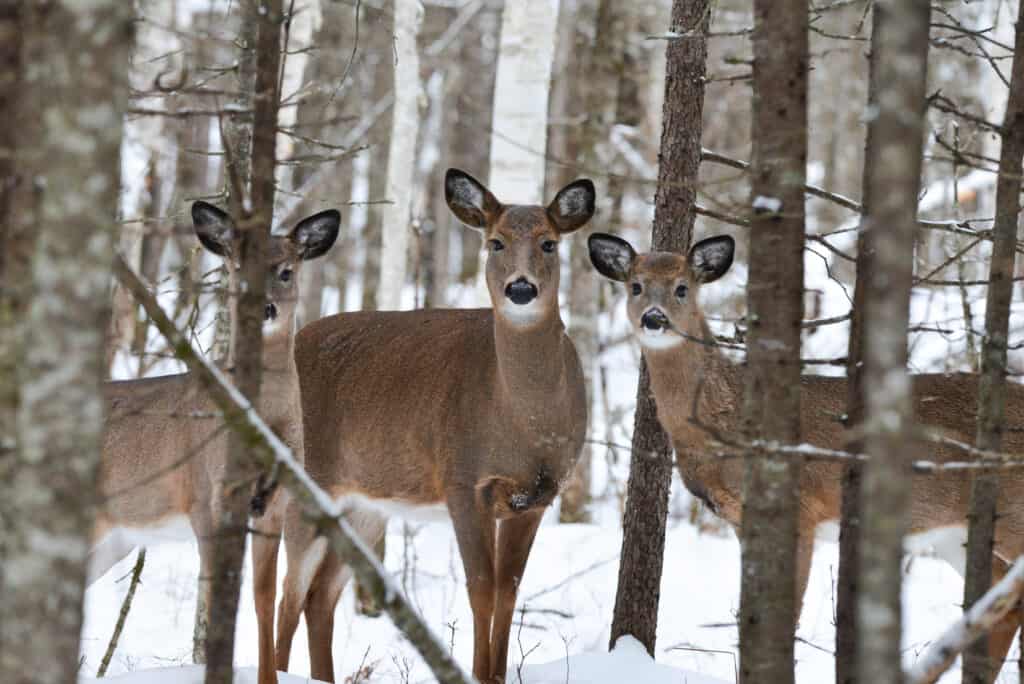
22 wild deer tested positive for CWD in Ohio since 2002.
©Rebecca C. Photography/Shutterstock.com
So, is there a buck-ocalypse arising in Ohio? Not quite. The Ohio Department of Natural Resources (ODNR) reports 22 wild deer that tested positive for CWD, with the first deer confirmed in 2020. While 22 may sound like a lot, nearly 39,000 wild deer have been tested for CWD statewide since 2002. The first ever case of confirmed zombie deer in Ohio was found in a captive deer located at a shooting preserve in 2014. Currently, a total of 24 captive deer have tested positive across three different facilities in Wayne and Homes counties.
Graze Anatomy: How Are Zombie Deer Reported?
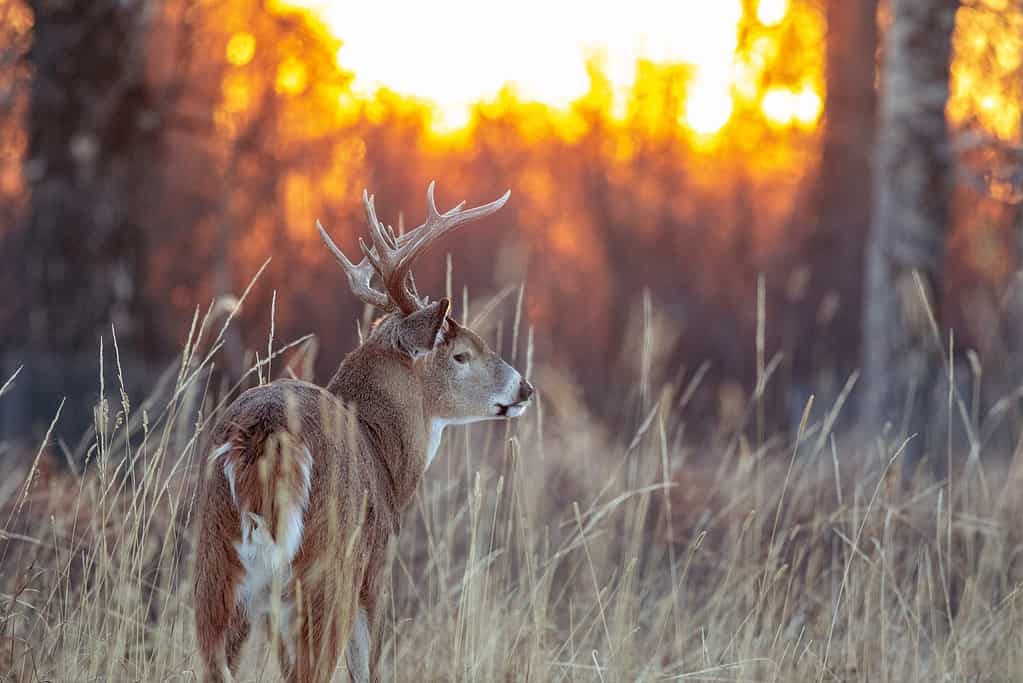
CWD cannot be confirmed by visual observation of a living deer.
©iStock.com/Wirestock
Unfortunately, confirming CWD in deer can be difficult due to the long incubation period, and the symptoms are similar to other diseases and malnutrition. Currently, the Animal and Plant Health Inspection Service considers the only definitive way to test for CWD in deer requires the close inspection of part of the brain stem or the medial retropharyngeal lymph nodes. The ODNR encourages hunters to leave the entire heads of harvested deer at their sampling centers or self-service kiosks. It also shares an informational video on removing the deer head for CWD sampling here.
Due to the increase in confirmed cases, the Ohio Department of Natural Resources Division of Wildlife enacted a Disease Surveillance Area encompassing all Wyandot, Marion, and Hardin counties. This means hunters must submit any deer harvested from these counties to be tested for CWD.
Are Zombie Deer a Safety Concern for People?
So, how dangerous are zombie deer, and should you be concerned about the fate of humankind? Don’t worry – you won’t be starring in Ohio’s version of The Last of Us anytime soon. Currently, the CDC states, “There is no strong evidence for the occurrence of CWD in people.” However, there are additional studies currently underway testing if there is any risk associated with people coming in contact with CWD-infected deer or elk meat. To be safe, avoid interacting with any wildlife exhibiting abnormal behavior, and make sure you send any harvested deer for sampling if it was collected within Ohio’s Disease Surveillance Area.
Wrapping Up the ‘Tail’ of the Antler Armageddon in Ohio
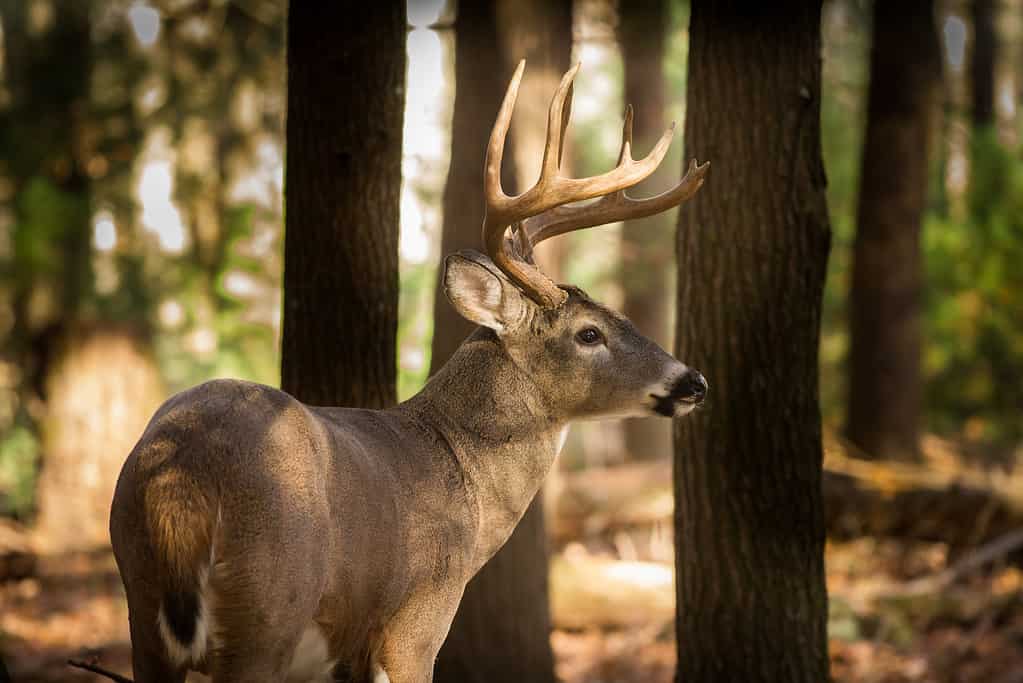
Hunters should continue to harvest deer from Ohio. However, submit them for CWD sampling if within the Disease Surveillance Area.
©EEI_Tony/iStock via Getty Images
While it may be entertaining to poke fun at the idea of a zombie deer apocalypse, this sad, fatal disease is slowly becoming a reality for some of our hoofed friends. Report irregular behavior from wild animals to ODNR and follow any state-mandated testing requirements for harvested deer in high-exposure areas. Hopefully, CWD will only affect a small percentage of deer by staying on top of reporting and limiting exposure.
Thank you for reading! Have some feedback for us? Contact the AZ Animals editorial team.

